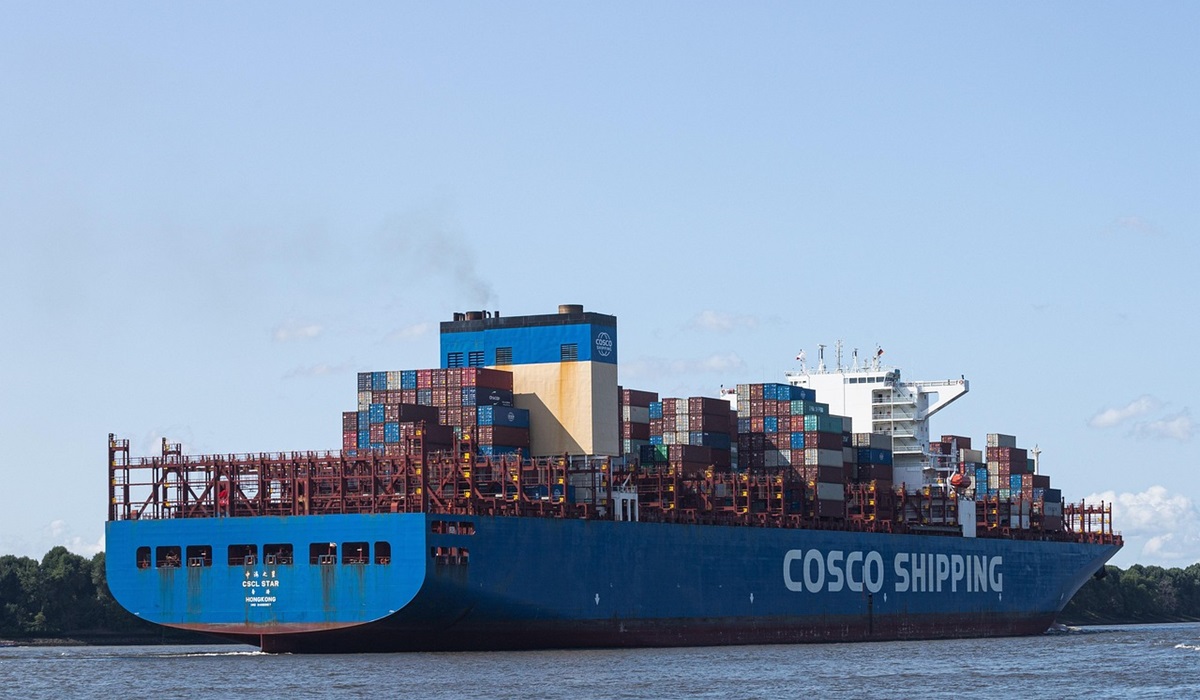Mexico’s New Interoceanic Corridor: A Rival to the Panama Canal
- Kingston Bailey
- Trending News
- August 19, 2025

Image Credit, Minka2507
Mexico has taken a bold step in reshaping global trade routes with the opening of the Interoceanic Corridor of the Isthmus of Tehuantepec, a vast infrastructure project that connects the Pacific and Atlantic Oceans across southern Mexico. More than just a rail line or a pair of upgraded ports, the corridor represents a new economic lifeline for the country and a viable alternative to the Panama Canal at a time when global commerce faces mounting pressures from bottlenecks, climate disruptions, and geopolitical uncertainty.
The dream of linking Mexico’s two coasts is not new. As far back as the early 20th century, the Tehuantepec Railway provided a modest connection between the Gulf of Mexico and the Pacific. But its capacity was limited and eventually overshadowed by the Panama Canal after its completion in 1914. More than a century later, under the administration of President Andrés Manuel López Obrador, Mexico revived the vision, launching the Interoceanic Corridor project in 2019. Construction officially began in 2020, and by late 2023, freight and passenger operations had started to roll.
The scope of the project is immense. The corridor stretches roughly 300 kilometers between the port of Coatzacoalcos on the Gulf of Mexico and the port of Salina Cruz on the Pacific. At its core is the rehabilitation and modernization of the century-old rail line, capable of carrying heavy freight across the isthmus quickly and efficiently. Alongside the rail, the ports have been expanded with new breakwaters, deeper docks, and modern container facilities, all designed to accommodate the massive Post-Panamax vessels that dominate global trade today.
The project was spearheaded by the Mexican government, with the Navy overseeing much of the construction to ensure both speed and accountability. The total investment is estimated at over seven billion U.S. dollars, with the majority coming directly from Mexico’s federal budget, supplemented by international financing. This level of commitment underscores the country’s determination to position itself as a logistics hub that can stand alongside, and at times compete with, Panama.
In addition to rail and ports, the plan includes ten new industrial parks along the corridor, with more expected in neighboring states. These parks are designed to attract domestic and foreign investors eager to take advantage of Mexico’s geographic position, low labor costs, and proximity to both the United States and South America. The project is therefore not just a transit route but a foundation for new industrial zones that could transform southern Mexico’s historically marginalized economy.
For global shippers, the Interoceanic Corridor offers a timely alternative. The Panama Canal, while still the cornerstone of interoceanic trade, has faced recurring challenges. Droughts in recent years have forced authorities to restrict ship crossings, creating delays and driving up costs. In addition, congestion and geopolitical risks can suddenly disrupt traffic. Mexico’s corridor provides another path: cargo can be unloaded on one coast, transported by rail, and reloaded on the other side in a matter of days.
While this intermodal system requires extra handling compared to sailing directly through the canal, the time and cost savings are already evident. A recent shipment of cars from Asia to the Atlantic coast cut several days off its journey and reduced expenses by double-digit percentages. For companies under pressure to shorten supply chains and diversify logistics, the corridor represents a welcome solution.
For Mexico itself, the implications are profound. The project strengthens the country’s strategic role in world trade, elevating it from a manufacturing partner to a vital transit hub. It also represents a significant step in narrowing the economic gap between the industrialized north and the underdeveloped south. By attracting factories, warehouses, and logistics firms to the Isthmus of Tehuantepec, the corridor is poised to create thousands of jobs, spark urban development, and reduce regional inequality.
On the global stage, Mexico now has a bargaining chip in trade negotiations and infrastructure diplomacy. The corridor complements the Panama Canal rather than replacing it, but by offering an alternative, it gives shipping companies, governments, and investors greater flexibility. In an era defined by supply chain resilience, that flexibility is priceless.
Of course, challenges remain. The success of the Interoceanic Corridor depends on seamless coordination between ports, rail operators, customs authorities, and private companies. The ports must continue to expand their capacity, and the rail system must maintain high levels of reliability and security. Local communities, many of them Indigenous, must also see tangible benefits to ensure that the project garners long-term social support. Environmental concerns, including the ecological footprint of port expansions and industrial parks, will require careful management.
Another question is scale. The Panama Canal still handles far more cargo than Mexico’s corridor can currently absorb. For the corridor to reach its full potential, it will need years of consistent growth, marketing, and investment. But even if it never fully rivals the canal in volume, it doesn’t have to. Its strategic value lies in diversification: when the canal is strained, when trade patterns shift, or when shipping companies seek alternatives, the corridor will be there.
Ultimately, the opening of the Interoceanic Corridor signals a turning point for Mexico. For decades, the country’s global identity has rested largely on its role as a manufacturing base for North America. Now, it is positioning itself as a logistics bridge between oceans. This transformation gives Mexico a new layer of economic and geopolitical relevance.
By building the corridor, Mexico has demonstrated the ability to execute a massive infrastructure project, attract billions in investment, and reimagine its place in global trade. The project also showcases a broader trend: nations are no longer content to rely on single chokepoints for global commerce. Alternatives are being built, and Mexico has entered that arena with confidence.
The Interoceanic Corridor of the Isthmus of Tehuantepec is more than a railway or a pair of upgraded ports. It is a symbol of Mexico’s ambition to rise as a central player in world trade. Officially launched in 2019 and already operational in freight and passenger service by 2023, the corridor embodies years of planning, billions in investment, and a vision that stretches beyond transport into industrial growth and regional development.
As global shipping faces uncertainty, Mexico has positioned itself as both a partner and an alternative. For the world’s supply chains, that means resilience. For Mexico, it means new jobs, new industries, and a stronger voice on the global stage. For the future of trade, it means that one of history’s oldest dreams—the linking of oceans across Mexico—is finally becoming a 21st-century reality.








